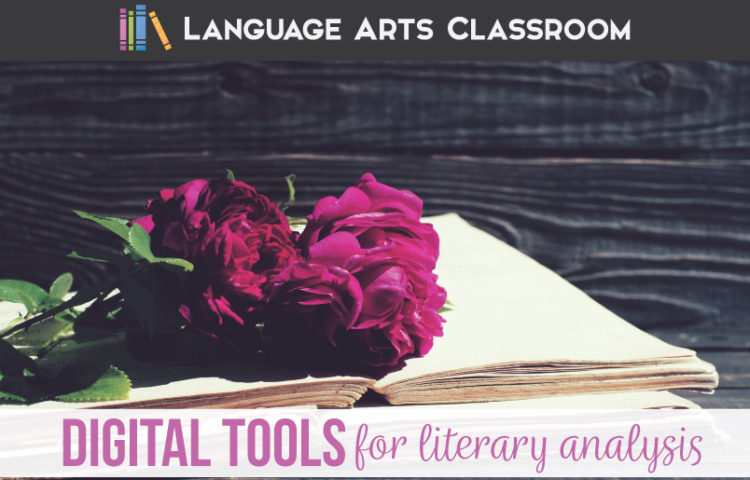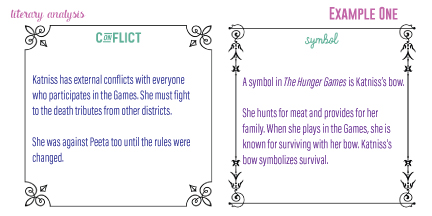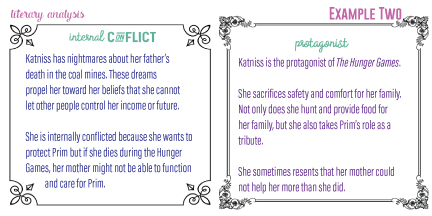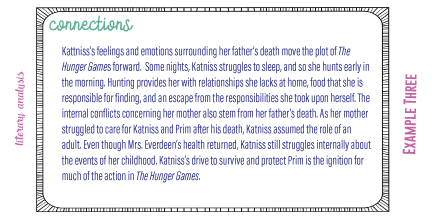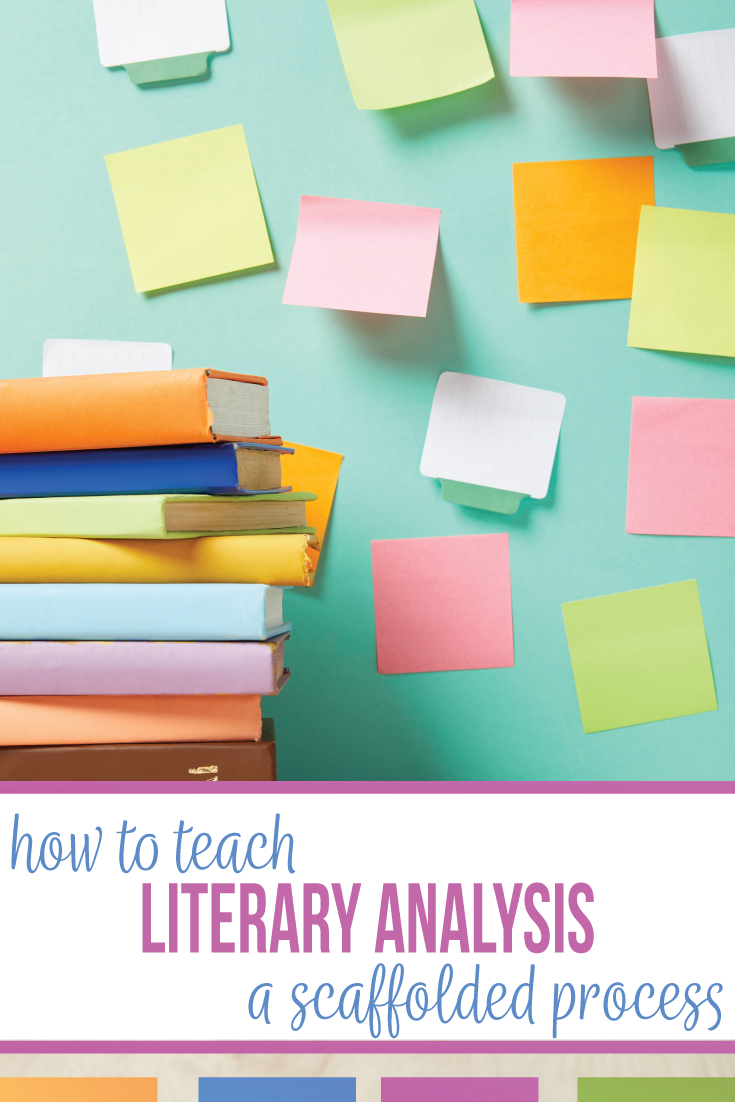Looking for alternatives to the literary analysis essay? I’ve found that a digital literary analysis project provides the perfect amount of scaffolding.
Years ago, I wanted students to complete a literary analysis essay. I considered how to teach literary analysis for a variety of students.The class had a range of abilities, and I was unconfident that a large essay would be successful.
Still, I wanted students to analyze and have fun exploring literature. I might not achieve analytical standards, but I wanted to work toward them. Plus, if students saw the fun that analysis brought to literature, they might be encouraged to try new texts. Finally, if classes could grasp onto scaffolded practice, maybe they would soon succeed at an essay.
I searched for alternatives to the literary analysis essay. I found a few one-pagers. Another teacher did a public speaking assignment. Those projects looked great, but eventually I settled on making my own literary analysis activities.
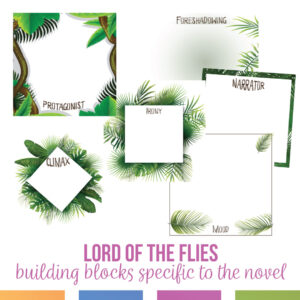
How can we show student learning?
I made digital frames and turned them into .JPGs for students and encouraged them to “build” a literary analysis presentation. Within Google Slides, students could add those images and text boxes. Students could literally build their own analysis with images! The labels had basic terms to inspire thought and conversation like tone, mood, direct characterization, setting, and on. Students found the information and recognized the concepts in literature. (YES!) Teaching literary analysis finally had a stepping stone.
Then, I gave students literary analysis questions. Within their Google presentations, they added details to the .JPGs, moved the frames around in the presentation, connected ideas from the story we had read, and answered the literary analysis questions.
It was a situation where the students surprised me, and I think the success was because students moved at their own speed. They all started with the basics: the labels and questions. When students showed me where they were in their understanding of literary analysis, I could move them forward individually.
The result was great. As students discovered the analytical side of literature, we met standards and elevated our understanding. Individuals who struggled with literature could show me what they understood, and I could prompt them to lead them toward analysis.
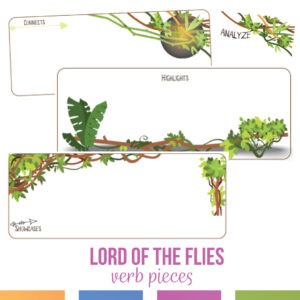
What are some creative alternatives to the traditional literary analysis essay?
Some creative alternatives to the traditional literary analysis essay include creating a visual presentation, creating a podcast or video discussing the themes and symbolism, or even creating a piece of artwork, a bit like I have below.
You can replicate this success, and in this post, I’ll break down how I use my digital literary analysis as an alternative to the literary analysis essay.
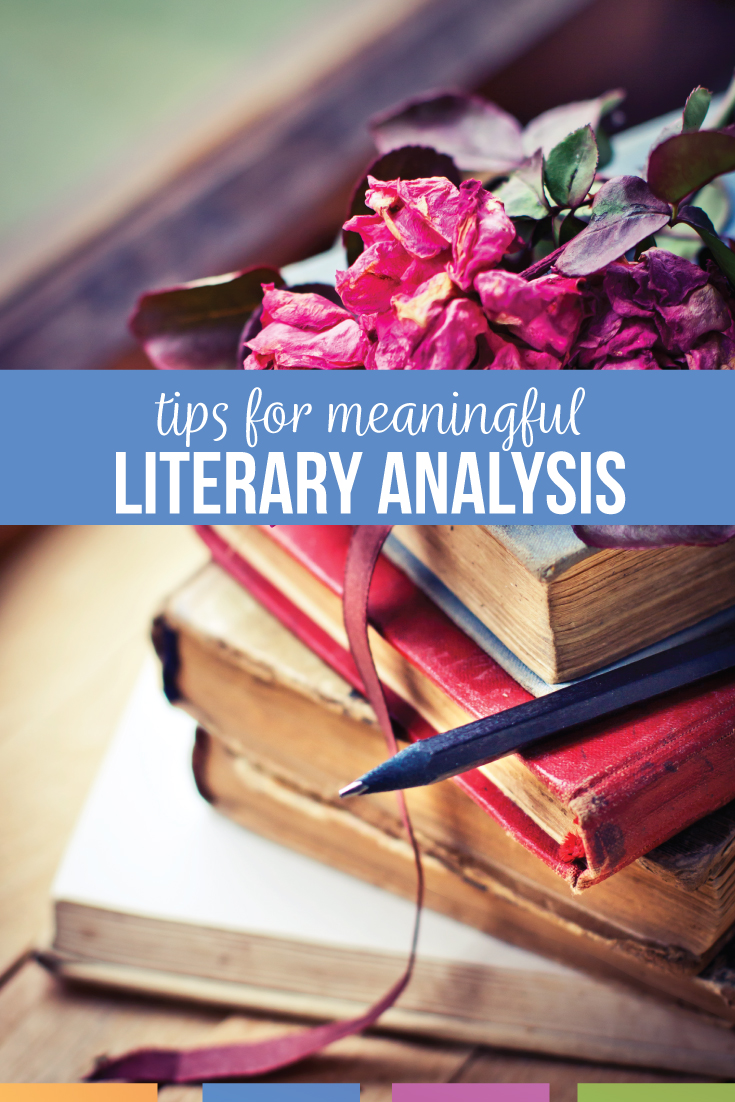
Use tech for alternatives to the literary analysis essay.
Beautiful and meaningful technology allows teachers to interact with learners as they work. When high school students work on these graphics (pictured throughout this post), the teacher can comment and add on their presentation in real time.
That means that you can spot critical thinking and add prompts. You can modify questions in different ways for each student, move them toward textual analysis, and address new challenges.
As I moved away from a traditional essay, I built pieces that were more like a visual essay.
Decide the outcome.
My digital literary analysis activity includes the frames (made into .JPGs), the pieces for students to manipulate, and questions to elevate understanding. Dependent on your circumstances, all of our outcomes might look different.
When beginning this activity with a class, I ask myself, what outcome do you want? At the start of the year as I’m getting to know students, I might ask students basic identification questions. With that, I’ll give students a variety of labels, ask students to choose five labels to explain, and review with students. After students identify the story, I’ll model a literary analysis question with them.
For instance: Elements of literature (like setting, mood, characters) interact and shape the story. Explain how two elements work together to create a certain effect.
I might upload two .JPGs for students to begin with identification: setting and mood. Once students identify those pieces, I can then add a question for them. We can build as the year continues.
Another one of my desired outcomes was for students to find success. I had reasons for creating alternatives to the literary analysis essay. Students weren’t diving into literature or seeking out symbolism or deeper meanings. I found that by providing plenty of choice within the frames, students could find something that they understood. One student might build off a characterization frame because they really enjoyed a character. Another might start with the digital theme piece.
By giving students choice, they all found their comfort levels. Students found success, and then I could introduce the more complex literary questions. This process naturally build into scaffolding the entire process.
Use for scaffolding.
Literary analysis comes easily to some students. They connect the pieces, explore the author’s life, and produce a great product. Other students need scaffolding and teacher prompting to get them to an actual analysis.
Other times, scaffolding is necessary. Here are what my .JPGs look like. (I used basic frames, added literary elements, and saved them as .JPGs.) I then gave students an entire folder of the frames and asked them to start with a few. Students simply insert a text box and type details over the labels. Again, at the start of a school year, I would only provide students with a few of the images so they aren’t overwhelmed.
Analysis Example One.
This first example shows a frequent type of literary analysis: the identification of aspects of the story. This identification is great and is definitely a part of literary analysis, albeit incomplete. When a student shows me that sort of literary analysis, I know that I need to ask a specific question about what the student has identified, such as how the symbol appears within a conflict.
Doing this allows me to meet students where they are in their understanding. If a student is confused about the story, I can use this opportunity to clarify misconceptions.
Analysis Example Two.
In the above example, the analysis is sound, but it is not meeting those difficult standards that call on students to draw conclusions from multiple areas of analysis. One difficult standard: Analyze how particular lines of dialogue or incidents in a story or drama propel the action, reveal aspects of a character, or provoke a decision. Even students who excel at literary analysis might struggle to meet that standard.
When I would work toward meeting this standard with students, I would often get examples like above. Once students had the pieces created (like in the first two examples), I knew they could visualize and understand the concepts. I would start where students were with their understanding and add one question at a time. With the ideas side by side on the digital frames, students could look at both sets and draw conclusions.
As I walked students through the process of literary analysis from identification to analysis and finally to more of a synthesis, the results improved.
Analysis Example Three.
If students were not succeeding at literary analysis, I found that I could push out pieces to students as they progress so that they are not overwhelmed. The pieces also allow for jigsawing of longer stories. Since I created numerous frames, no two groups would be working on the exact combinations. Every analysis would differ, which made for nice class discussions.
Decide how you want students to share.
With older students who understand literary analysis, give students the literary analysis questions and a Google Drive link with all of the images. Those students create and digitally stack the labels to build their literary analyses. I’m always amazed at the new ways they build!
For students who need scaffolding, I take one of two options:
Option One: I have asked students to make a presentation, and they use Google Slides as their creation. They add their .JPGs and show me what they understand. Then I push out analysis questions to them.
Option Two: I have students create a digital document and “insert” and move the images. You can create a document again in Google Slides (students typically change the size to 8.5X11) or a webpage. Students can really use any platform they are comfortable with as long as the platform allows images. This allows students to create more of a one-pager or collage.
When I looked at overall one-pagers as alternatives to the literary analysis essay, the forms were pre-made. I like the idea of students building their own one-pager because they can add pieces that hold the most meaning to them. Plus, every story is different, and these frames work with novels, yes, but also a short story or poem.
Final ideas for analysis.
No matter what scaffolding and distribution technique I used, my classes then found success with more difficult literary analysis questions. Overall, the process really is simple: I provided students basic concepts to start their analysis: antagonist, protagonist, theme, tone, setting, and on. We identified the main idea and maybe completed a close reading together.
After students identify these aspects, I provided them a list of questions to move toward literary analysis. Since my activities were digital, I had a great way to communicate and build with my learners—privately. Plus, the final product was easy to display.
I’ve included the framework (the Google presentation, 50+ labels, and ten literary analysis questions) for you to use digital literary analysis with your students that you can share across digital platforms. The activity is an alternative to the literary analysis essay; however, students can turn their information from the digital pieces into an essay.
As always with literary analysis, have fun building a deeper understanding of literature with your students. This essay alternative works across grade levels.

